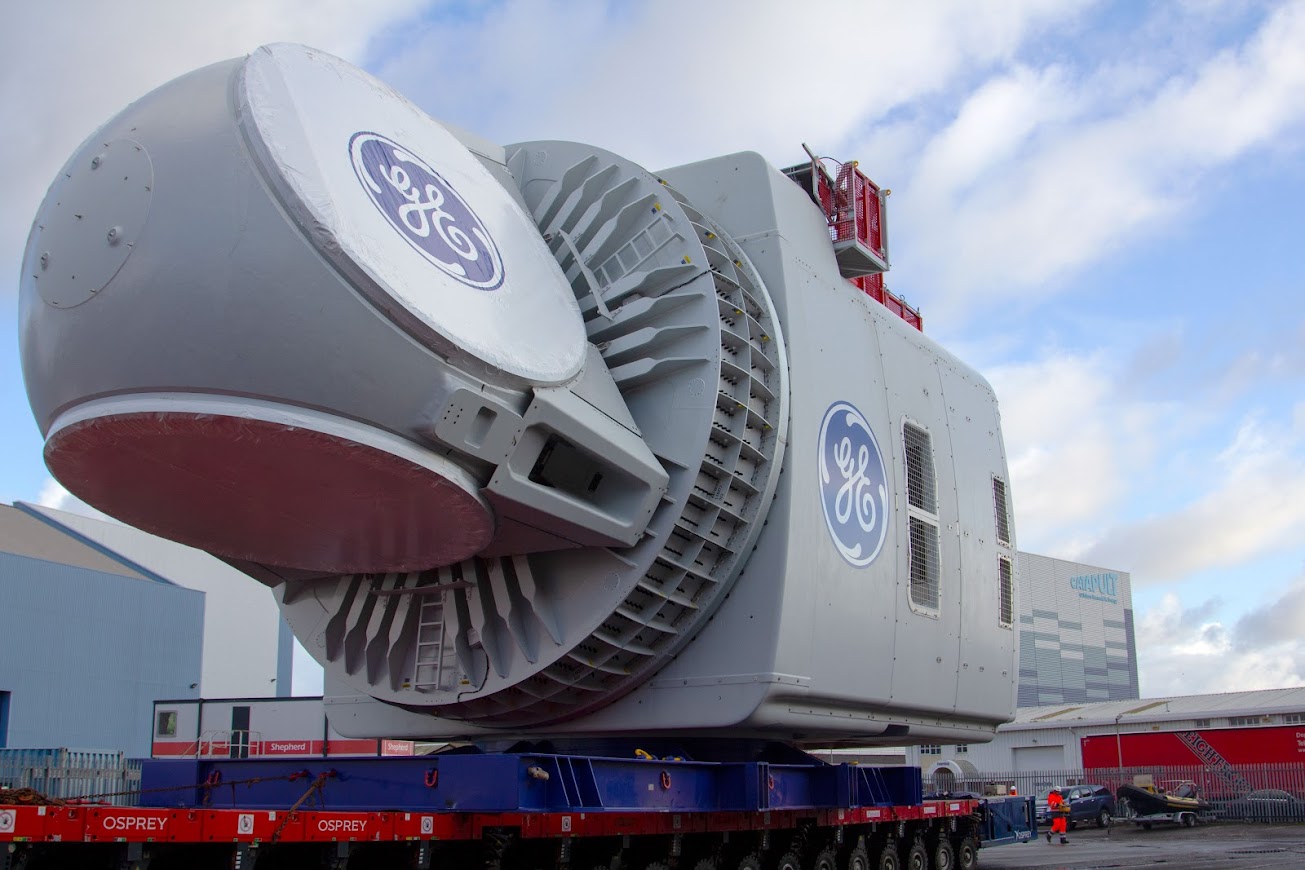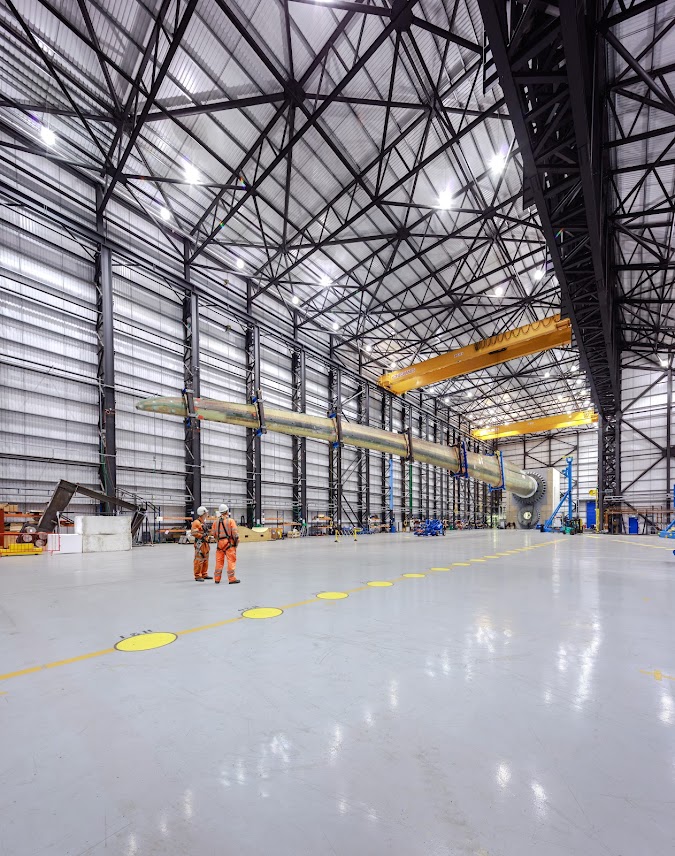The Innovation Premium: How the Net Zero Transition is Driving Economic Growth
LM Blade arriving at ORE Catapult in Blyth
As industries adapt to a greener future, emerging technologies are driving economic growth in communities that have struggled for decades. We take an in-depth look at the work of the Offshore Renewable Energy (ORE) Catapult in Blyth to explore how investing in innovation that enables the net-zero transition can provide a catalyst for economic regeneration.
The transition to a low-carbon future is leading to the emergence and growth of new sectors and industries that can both turbocharge local economies and support the nation’s net-zero ambitions.
For those seeking an example of the way that innovation can drive wider economic transformation, the Port of Blyth in the North East of England is a good place to start.
Blyth was once Europe’s largest coal exporting port. At its peak, the port was exporting over 6 million tonnes of coal each year from the region’s mines. Yet today, Blyth finds itself at the global forefront of an offshore energy and renewables industry that will play a critical role in the transition to a low-carbon future.
One of the organisations that has been a central part of Blyth’s journey is the Offshore Renewable Energy Catapult. ORE Catapult is the UK’s leading technology innovation and research centre for offshore renewable energy. Funded in part by Innovate UK, the not-for-profit UK company brings together industry and academia to drive innovation in renewable energy and support the UK supply chain in renewable technologies.
 Tony Quinn, Director of Technology Development, ORE Catapult
Tony Quinn, Director of Technology Development, ORE Catapult
Tony Quinn, Director of Technology Development at ORE Catapult, has seen the transformation of the port at first hand. Quinn grew up locally, with his father working in the North East’s ship-building industry. For him, the economic benefits of joining government and industry investment in R&D are now being felt right across the local community.
“The decline of traditional industries impacted on the local economy for decades,” he explains. “It left a legacy of high levels of unemployment and deep pockets of social deprivation in the town. But the development of new high-tech industries, in particular offshore wind, is changing the face of Blyth. It is supporting a growing local economy and creating a real sense of civic pride in the unique skills and facilities that the town has here.”
At the heart of the work that ORE Catapult has led is advanced, late stage R&D. As opposed to early stage, academic or ‘fundamental’ research, this is the Research, Development and Demonstration (RD&D) that happens in partnership with industry and enables new product and service development. This, in turn, leads to investor confidence, unlocking capital and creating jobs and growth.
This RD&D capability has drawn global giants like GE to the town, who used the world-leading research facilities to test and certify the world’s largest wind turbine ahead of its deployment in UK waters. This crucial late stage R&D provided confidence to investors and helped offshore wind developers to secure £9bn of investment capital needed for the turbine’s deployment on Dogger Bank, the world’s largest offshore wind farm 100 miles off the North East.
 GE Haliade-X turbine arriving at ORE Catapult in Blyth
GE Haliade-X turbine arriving at ORE Catapult in Blyth
JDR Cables, a UK manufacturer specialising in the offshore wind industry, and a long time partner of the Catapult in industrial R&D, also recently announced expansion of its UK manufacturing with a new site on the Blyth Estuary. Work has begun on a £130m cable manufacturing plant, and the new facility, which is planned to open in 2024, is set to create 171 high-quality local jobs while safeguarding 270 jobs at its existing UK facilities.
JDR’s CEO, Tomasz Nowak said: “As the energy transition gathers pace and the UK’s offshore wind sector continues to thrive, turbines are growing taller and moving farther from shore, calling for higher voltage subsea cables. We’re delighted to build on our legacy as a leading provider of subsea cables to the offshore energy sector by investing in this new facility.
 JDR Subsea Cables
JDR Subsea Cables
“We’re also delighted to continue our investment in the North East of England, and in bringing new jobs to Cambois, Blyth and Northumberland. Our proposed facility is strategically located to capitalise on the rapidly growing and largest offshore renewable energy market in Europe and now more than ever it’s critical to push forward with the UK’s offshore energy ambitions we are delighted to take this major step forward in delivering the new site at Blyth.”
But whilst the headlines may be stolen by the major global companies accessing the Catapult’s state of the art testing facilities, equally important is the way the Catapult is acting as a catalyst to transform the lives of local community.
“A critical part of our strategy is to ensure that the benefits of investment improve the opportunities for the next generation,” Quinn explains. “This starts in local schools, where we work with over 50 local businesses and over 2500 students on STEM subjects each year. That feeds through into apprenticeships, internships, graduate placements, and more recently ‘KickStart’ employment opportunities here at the Catapult, where study and on-the-job learning are combined to give local young people the foundation for a successful career in a rapidly growing sector.”
The manner in which ORE Catapult is using targeted R&D investment to change the face of Blyth is increasingly on the radar of local and national politicians.
Constituency MP, Ian Levy, has seen at first hand the way that the new industries locating in the town have brought wider benefits. Commenting on this he said:
"The work that the Offshore Renewable Energy Catapult does underpins Blyth and the wider North-East as a global centre of excellence for renewable energy. I wholeheartedly support their development plans and will continue to help them make their case for Government support.
“Their work attracts inward investment into our area and brings much needed, well paid jobs. The future in Blyth Valley looks bright and the Catapult is at the heart of that."
Meanwhile, Minister for Levelling Up, Dehenna Davison MP said:
“To see how investment in green technology can deliver high quality jobs in all areas of the country, you don’t have to look further than Blyth, an area at the forefront of the government’s net zero drive.
“ORE Catapult is already bringing together government and private investment to drive productivity and spread prosperity across the wider North East.
 LM blade in ORE Catapult test facility
LM blade in ORE Catapult test facility
“This, coupled with more than £32 million in levelling up funds, is ensuring areas like Blyth have the investment they need to innovate, grow and unlock a greener future for generations to come.”
Those who live and work in Blyth are justifiably proud of the role that the port is playing in supporting the net zero transition. As pressure on public finances grows, it is a compelling example of how modest, targeted public R&D support can act as the catalyst to unlock large-scale industrial R&D spend and inward investment.
As Blyth’s transformation shows, that can bring social, economic, and environmental benefits to communities, shaping a better future for everyone.
